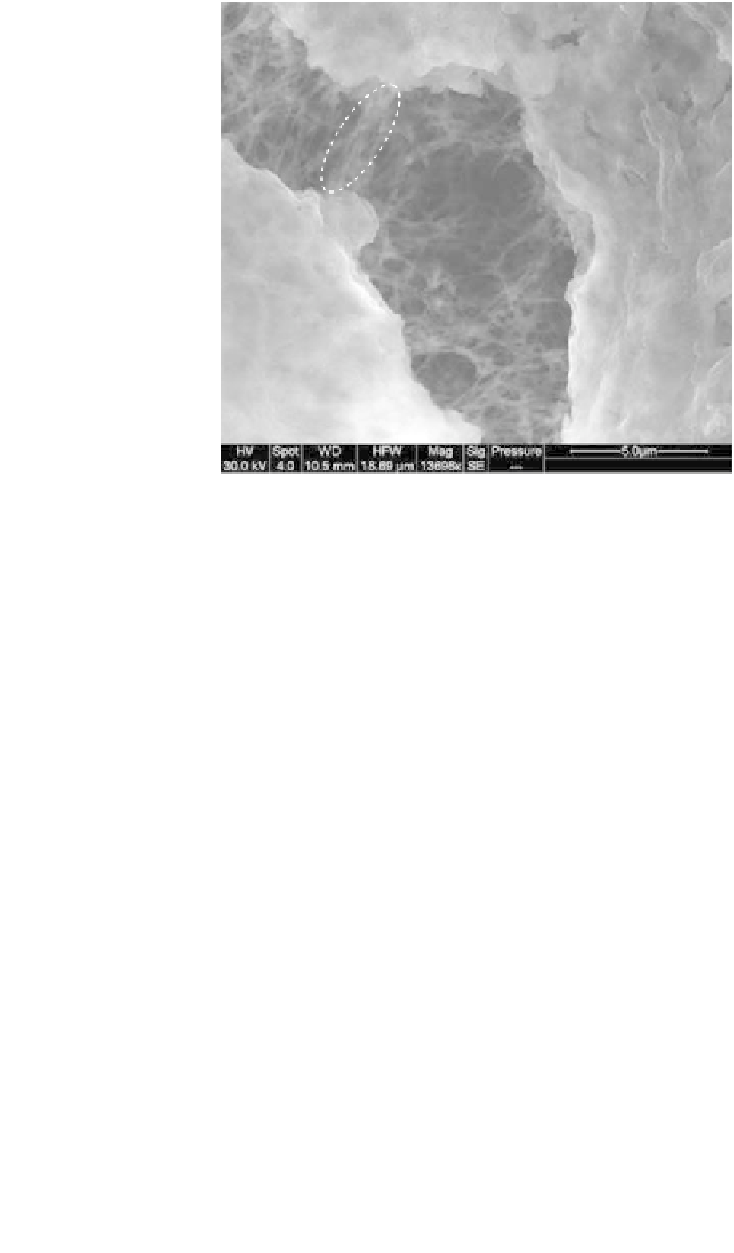Information Technology Reference
In-Depth Information
Figure
18.2.
A closer look of block cell division.
As stated before, this was a surprising finding of this approach creating thin
films. Another issue is the manipulation of the bacteria shell containing the
thin film inside,
i.e., the handling of the CNT thin film created inside the
bacteria.
18.6.2.3. Clinically Administered Exposure—Modified CNTs.
The poten-
tial of CNT toxicity in terms of medical applications only becomes relevant
in terms of functionalized CNTs and their resulting properties. As stated
before, impeding of the cell cytokinesis was a surprising finding of this approach
to creating thin films. Another issue is the manipulation of the bacteria
shell containing the CNT thin film inside, i.e., the handling of the CNT thin
film created inside the bacteria. This will be researched further by characterization
studies.
An in vitro study of pristine and oxidized MWCNTs on T lymphocytes found
significant, dose-dependent toxicity that was most severe for the oxidized
MWCNTs. Like SWCNTs, MWCNTs are known to be internalized into cells.
Furthermore, pristine CNTs tend to form macroscopic aggregates in solution,
while oxidation allows for finer dispersion and homogeneous aqueous suspension.
Thus, a factor affecting toxicity in this case could include the fact that higher
concentrations of oxidized MWCNTs are able to interact with the T lymphocytes,
making it unclear whether the higher toxicity is due to the functional groups on
oxidized MWCNTs.






Search WWH ::

Custom Search